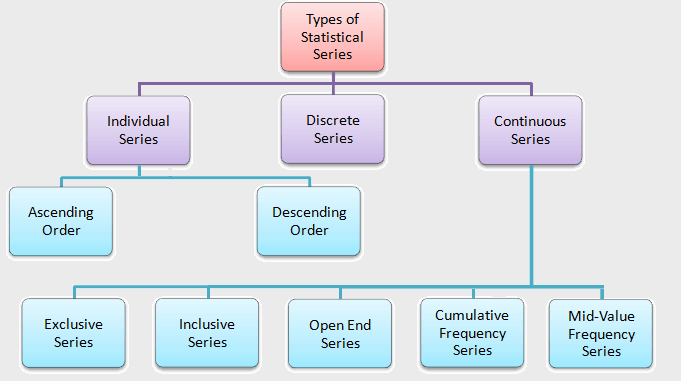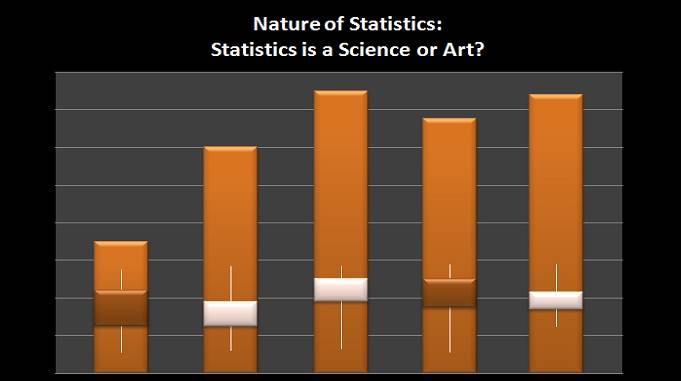
Continuous Series in Statistics with Example and Types of Continuous Series
Continuous Series in Statistics:
Continuous Series are a kind of Statistical Series in which all of the class intervals are listed in a table together with their corresponding frequency. It is the third series, after the individual and discrete series. The term “continuous series” or “grouped frequency distribution” refers to the same thing.
In a continuous series, frequencies are shown along with the variable’s value in the form of class intervals. In other words, a continuous series is one in which both the class interval and the corresponding class frequency are given.
We get X and f in this series, where f is the frequency of X indicating how many times X is repeated. But X is shown as a class interval or range, such as 0-5 or 5-10.
When there are a lot of values or items and their magnitude is likewise a lot, continuous series is the best option. The values or items in a continuous series are organised into distinct categories. When individual items are placed in classes, they lose their individual identity and merge into one or the other class groups. The classes created in this way have continuity because where one class ends, the next class begins. Such a series is known as a continuous series because of the class continuity.
Example: The following table shows the marks scored by 40 students in an exam.
|
Marks (X) Class-intervals |
No. of Students
(Frequency f) |
|
0-20 |
9 |
|
20-40 |
5 |
| 40-80 |
11 |
| 60-80 |
8 |
| 80-100 |
7 |
Hence, continuous frequency distribution refers to the presentation of data into continuous classes with the associated frequencies. It is obvious that,
- The various groups into which the values of the variable are classified are known as classes or class intervals. In this example, 0-20, 20-40 … etc. are class intervals.
- Class limits are the two values defining the class interval. For example, in the class interval 20-40; 20 is the lower limit and 40 is the upper limit.
- The length of the class interval (20-0=20, 40-20=20, … etc.), that is, the difference between the lower limit and upper limit of the class interval is called the width or the magnitude of the class. In this example, the width of the class interval 20-40 is 20.
- In this example, the numbers 9, 5, 11, 8, 7 in the second column are known as their respective frequencies.
- To find the mid-point of the class interval, we add both the limits and take their average. For example, the mid-value of the class interval 20-40 is; (20+40)/2=30.
Hence, if the particular information of the units collected is irrelevant or not in the definite order in which the observations occur, then we first classify the data into different classes by dividing the variables of all values into appropriate groups and then record the number of observations in each group. So we may create a series that shows frequencies along with the variable’s value in the form of class intervals. A series of this type is called a continuous series.
How to create a Continuous Series:
We take class intervals instead of the variable to create continuous series. When creating Continuous Series from individual series or raw data, apply the following steps:
- First, calculate the range of the data set. For this, subtract the lowest data value from the highest data value.
- Next, divide the range by the number of the group you want your data in and then round up.
- Then, use class width to create groups or classes or class intervals. Write these class intervals in the first column (X-column).
- Then put the tally marks against these intervals in the second column.
- After that, count the total number of tally bars, and enter a numerical value as the frequency, in the third column.
In other words, to create continuous series, start with taking class intervals instead of the variable in the first column (X-column), then count how many times each value is repeated and write this number against the corresponding class intervals in the second column heading frequency (f-column). This type of data representation is also known as a continuous frequency distribution.
Types of Continuous Series:
There are 5 types of continuous series. These are as follows:
- Exclusive series
- Inclusive series
- Open-end series
- Cumulative frequency series
- Mid-values frequency series
Example of a Continuous Series:
The following are the marks scored by the 20 students in a class out of a total of 100. If the marks scored by the 20 students in the class are given individually, it will form an Individual series, as shown follows:
90, 55, 35, 78, 51, 57, 61, 55, 55, 85, 78, 90, 35, 41, 61, 55, 62, 64, 55, 19.
This data can be represented in continuous series or in grouped frequency distribution as follows:
|
Marks (X) Class-intervals |
No. of Students
(Frequency f) |
|
0-20 |
1 |
|
20-40 |
2 |
|
40-60 |
8 |
| 60-80 |
6 |
| 80-100 |
3 |
| Total |
20 |
(Source – Various books from the college library)
Tags: write an example with the solution of continuous series in statistics, types of continuous series in statistics with example
Copyrighted Material © 2019 - 2024 Prinsli.com - All rights reserved
All content on this website is copyrighted. It is prohibited to copy, publish or distribute the content and images of this website through any website, book, newspaper, software, videos, YouTube Channel or any other medium without written permission. You are not authorized to alter, obscure or remove any proprietary information, copyright or logo from this Website in any way. If any of these rules are violated, it will be strongly protested and legal action will be taken.




Be the first to comment